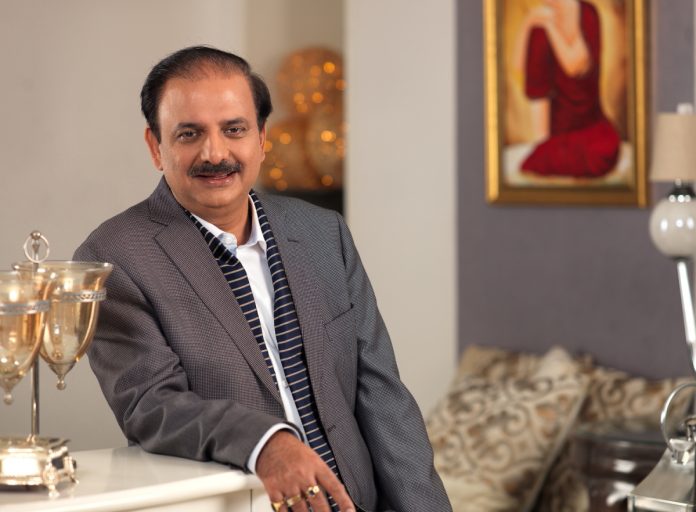The industry should remain optimistic about India’s potential, seek collaborative opportunities, expand beyond metro cities, and prioritize measuring qualitative metrics
Q. Could you please tell us about some of the significant advancements made to the country’s handicraft industry in the year 2023?
Rakesh Kumar. India Expo Centre and Mart is spread over 58 acres of land and has a unique combination Trade Marts with Exhibition & Convention Facilities, Lawn, Business Centre, Restaurants, Transportation facilities and sufficient Parking Area for over 10,000 cars and 100 Buses/Trucks inside the complex. It is well linked to the main Ring Road of Delhi through 8 lane expressway.This state-of-the-art, multi-functional venue with a rare combination of technology merged with world-class facilities and safety standards is suitable for hosting international business-to-business exhibitions, conferences, congresses, product launches, promotional events and most predominantly act as a centralized contact point for overseas buyers and the cottage based manufacturer exporters for conducting business.
In 2023, IEML successfully rebounded from the Covid impact, hosting major events with high footfall. Key initiatives included infrastructure upgrades and launching the EXPO Inn Suits, highlighting our commitment to offering a worldclass venue and enhancing the event experience.

Q. What would be some evolving trends in the Indian Exhibition industry in the coming years?
Rakesh Kumar. Key trends include an increased focus on global sourcing, digitalization, differentiated exhibition themes, skill development, and strategic partnerships. These trends align with government initiatives, promising a dynamic and progressive future for the industry.
Q. What are your upcoming plans for IEML?
Rakesh Kumar. IEML is evolving into an integrated exhibition player, enhancing venue capabilities and specializing in event conceptualization and communication. With plans to manage additional venues and host numerous shows, IEML is set for significant expansion and innovation. IEML’s focus is on scaling up infrastructure to accommodate larger events, integrating advanced technology, and enhancing service quality. The addition of the EXPO Inn Suits is a step towards providing an integrated venue experience, positioning IEML as a leader in the sector.
Q. Could you please tell us about some of the significant advancements made to the country’s handicraft industry in the year 2023?
Rakesh Kumar. As an apex body of handicrafts exporters for promotion of exports of Handicrafts, EPCH has projected India’s image abroad as a reliable supplier of high quality of handicrafts goods & services and ensured various measures keeping in view of observance of international standards and specification. In 2023, EPCH played a pivotal role in enhancing India’s handicraft industry by focusing on market and productspecific strategies, technological upgradation, and global market exploration. These efforts led to a significant increase in exports, reaching Rs. 30,019.24 Crores, showcasing a strategic impact on the industry’s growth and international presence.
Q. The organisation has come a long way under your leadership too, what are your plans and strategies to leverage and execute the EPCH’s goals and visions in future?
Rakesh Kumar. EPCH has been serving its members since 1986 and over the last 30 years has been able to provide them with marketing platforms both in India and overseas, design and product development solutions through common facility centres in major craft clusters, market intelligence through resource centres, testing facilities through productspecific testing labs, necessary compliance certification through indigenous schemes like Vriksh, capacity building through Centre for Handicraft Exports Management Studies (CHEMS), skill development eco system by setting up institutions like Handicrafts and Carpet Sector Skill Council (HCSSC) and many more such initiatives have been taken. The interventions undertaken for last so many years have resulted in the growth of exports from mere Rs.387 crores in 1986-87 to Rs. 33,250 crores in 2021-22. Under my leadership, EPCH has adopted a dual strategy targeting market-specific and cluster-specific growth. As I said above, we’ve established centers of excellence and facilitated international collaborations, aligning with the PM’s vision for economic growth and sectoral innovation.
Q. The handicraft industry has shown a steady growth, what are the statistics and possibilities for the Indian market?
Rakesh Kumar. India, being the most culturally rich country in the world, it is quite fortunate enough to have skilled and creative artisans. These artisans are pride of India as they have taken the handicraft industry on world map. The crafts from different parts of the country reflect the culture and aesthetics of that state. The diverse communities of India, showcase the roots and traditions from centuries. With the continuous development in the sector & promotional initiatives of the government, the handicraft sector has grown multi folds over the years. According to the data release by Ministry of Textiles, the Indian handicraft industry has shown a steady growth rate of 20% every year. Going as per the statistics of the handicraft exports, it can be said that in the present time of globalization, the handicraft sector has immense opportunities in domestic and International markets.
The Indian handicraft sector, a vital source of employment and foreign exchange, has shown significant growth with exports reaching Rs. 30,019.24 Crores in FY 2022-23. The focus on diverse handicraft categories and targeted international markets indicates a robust and sustainable growth trajectory.
Q. Your message to the industry at large?
Rakesh Kumar. The industry should remain optimistic about India’s potential, seek collaborative opportunities, expand beyond metro cities, and prioritize measuring qualitative metrics. This approach will ensure holistic growth and global competitiveness in the industry.



















